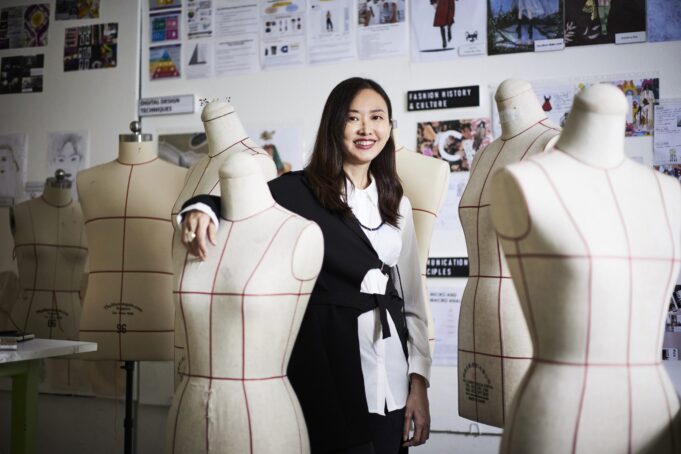The world of fashion is fast-paced, competitive, and always changing. What people wear reflects the culture and times they live in. But how do certain looks and trends emerge and become popular? There is more that goes on behind the scenes than most consumers realize in determining what styles hit the mainstream fashion world.
The Power Players in the Industry
While talented designers and clever marketing teams play key roles, trend forecasters are perhaps the most influential figures that set the tone each season. These are the expert analysts who study current events, politics, economics, technology, and cultural shifts. They spot patterns, make predictions, and determine color schemes, fabrics, silhouettes, and styling details they think will resonate in the months ahead. Trend forecasting firms then publish reports that major style brands rely on to inform their collections.
Retail giants also sway trends since they have the scale and funds for major advertising campaigns to promote certain looks. Fast fashion brands like Zara and H&M have mastered replicating catwalk and celebrity styles quickly and cheaply to ride waves of popularity. Department stores also produce private label fashion lines based on upcoming trends each season to offer consumers affordable, on-trend items.
The Celebrity Effect
Celebrities have always marketed cultural ideals of beauty and style to the masses. Today, with social media, their influence is more direct and powerful than ever. What celebrities wear, promote, and even comment on can instantly ignite or diminish support for certain fashions.
The experts over at Olympic Eyewear explain that when stars like Beyoncé and Lady Gaga don massive designer sunglasses one week, similar oversized shades start selling out online and appearing on runways the next. And when Meghan Markle wears an affordable dress, it often sells out that same day. For these reasons, brands clamor to both dress stars and align with their personal brands by having them star in ads and promote products.
The Rise of “Micro Trends”

In today’s digital age, trends explode in popularity at rapid speeds and then fade out just as quickly to make room for the next viral look. Trend cycles have accelerated from taking years to develop to now emerging and disappearing in mere months or weeks in some cases.
Social platforms like Instagram and TikTok have enabled more niche “micro trends” to gain momentum. For example, a certain handbag style spotted on a few influencers can spur demand and sell out before mainstream style media is even discussing it. Street style also seeds many new trends that bubble up from the concrete before gracing the runways.
The Future of Predicting Trends
In the past, fashion forecasters relied largely on intuition and insight to predict trends. But data analytics stands to sharpen accuracy like never before. Search volumes, buy-now button clicks, and retail sales performance metrics can indicate rising demand for certain products.
Some brands are even applying artificial intelligence to mine data, detect patterns and derive meaning. Spanish retailer Zara is recognized as a pioneer in data analytics to spot trends, while also relying on the observations of an international team of shoppers and spotters reporting on the latest styles. As technology progresses, mining insights around consumer behavior and preferences will only get more sophisticated.
Cultural Influences
The role of cultural diversity and globalization in shaping fashion trends cannot be overstated. As the world becomes more interconnected, the exchange of cultural aesthetics and ideas has enriched the global fashion landscape. Designers draw inspiration from the rich tapestry of global cultures, incorporating traditional fabrics, patterns, and techniques from various regions into their collections. This fusion of styles promotes a more inclusive industry where different cultures and identities are celebrated. Moreover, the rise of social media has accelerated the spread of regional trends, allowing them to gain international popularity quickly. Cultural diversity in fashion not only broadens the industry’s creative horizons but also fosters a deeper understanding and appreciation among different communities.
Sustainability Considerations

Sustainability has emerged as a central theme in the fashion industry, reflecting growing consumer awareness of environmental and ethical issues. The demand for eco-friendly alternatives is reshaping how companies source materials, produce garments, and manage waste. Sustainable trends emphasize the use of recycled materials, ethical labor practices, and techniques that reduce environmental impact, such as water-saving dyeing processes and zero-waste design. This shift is not only a response to consumer demand but also a recognition of the industry’s responsibility to address its environmental footprint. As sustainability becomes more ingrained in the fashion landscape, it challenges designers and brands to innovate and redefine what fashion means in the 21st century.
Community and User-Generated Content
The rise of user-generated content and community-driven fashion platforms has democratized the fashion industry, allowing ordinary people to influence and participate in shaping trends. Social media platforms, blogs, and online communities serve as stages for showcasing personal style, sharing DIY fashion projects, and discussing trends. This grassroots approach to trendsetting has shifted some influence away from traditional style authorities, empowering individuals to have a direct impact on the industry. User-generated content not only fosters a more inclusive and diverse dialogue but also encourages creativity and personal expression among a broader audience.
Fashion Subcultures and Counter-Culture Movements
Underground fashion subcultures and counter-culture movements have long played a pivotal role in challenging mainstream trends and introducing alternative styles. From punk and goth to streetwear and techwear, these movements represent a rebellion against conventional fashion norms and values. By prioritizing individuality, authenticity, and often political or social messages, subcultures offer alternative visions of fashion that resonate with those looking for ways to stand out from the mainstream. Over time, elements of these alternative styles often trickle up to the mainstream, influencing broader mode trends and highlighting the dynamic interplay between the fringe and the center of the fashion world.
Fashion Education and Research

Fashion education and research institutions are crucial in nurturing the next generation of designers, critics, and industry professionals. Through academic study and practical experimentation, these institutions foster innovation and creativity, contributing significantly to the evolution of fashion trends. Beyond teaching traditional design and production skills, many programs now incorporate sustainability, technology, and ethics into their curricula, preparing students to address the challenges facing the modern style industry. Moreover, research conducted within these academic settings often leads to groundbreaking developments in materials, techniques, and sustainable practices, further driving the evolution of fashion.
Conclusion
A tremendous amount of thought, analysis, number-crunching and influencing goes into determining each season’s batch of new trends. While fashions that hit the mainstream feel like overnight sensations, extensive planning and preparation behind the curtain precedes those styles gracing store racks. Data and technology seem primed to take an even more prominent role in the fashion trend forecasting process moving forward.















